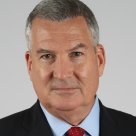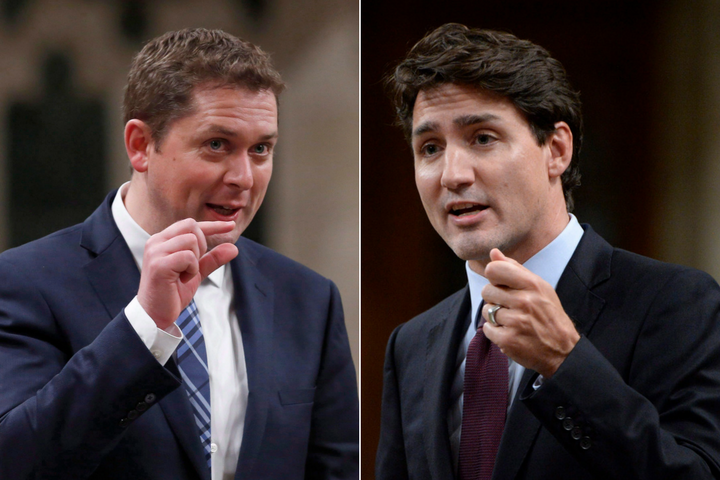Canadian voters unhappy with the political status quo have always been willing to shake things up and in 2019, there’s a better-than-even chance that a preference to turn electoral politics upside down will be a major factor in the country’s 43rd general election.

WATCH: Entering an election year, Global News’ parliamentary correspondents sit down for a round-table discussion on the issues they expect to define the 2019 campaign

Volatility and unpredictability among a growing group of voters across the country, who are ready to take new chances with their ballots, promises to be one of the biggest challenges with which the two leading establishment parties — Justin Trudeau’s Liberals and Andrew Scheer’s Conservatives — will have to contend.
This recent trend in volatility first emerged in Alberta on May 5, 2015. Fed up with the status quo in the province, Albertans dumped a Progressive Conservative party that had ruled the province since 1971, sending it to third place in the legislature and vaulting the New Democratic Party — in Alberta! — into government. Albertans may be ready to shake things up once again this year and, for the second consecutive time, choose yet another party — the United Conservative Party of Alberta — that has never held power in that province.
But that trend — an electorate ready to try new kinds of change — was also on full display elsewhere in the country in 2018.
- Michael Kovrig reflects on ‘brutally hard’ Chinese detention: ‘You’re totally alone’
- After controversial directive, Quebec now says anglophones have right to English health services
- Conservatives set to table non-confidence motion Tuesday. What to expect
- TD Bank moves to seize home of Russian-Canadian jailed for smuggling tech to Kremlin
Let’s work east to west, starting in New Brunswick last fall. In the province’s general election on Sept. 24, just under 70 per cent of those who voted cast a ballot for one of the two mainline parties, the New Brunswick PCs or the NB Liberals, meaning nearly one-third of voters went for something different.
By comparison, in the 2012 New Brunswick election, only five per cent of voters went for something new and 95 per cent went through either the red door or the blue door. A significantly larger number of New Brunswickers rejected that binary choice in 2018, electing representatives of the new People’s Alliance of New Brunswick and boosting the number of Green MLAs.
The move towards new parties and new choices gave New Brunswick its first minority in nearly 100 years and has shaken up what for generations has been a relatively moribund political culture.
WATCH: Pollster Darrell Bricker says 2019 election is the Liberal Party’s to lose

Let’s move east to Quebec where, a couple of weeks after New Brunswick’s election, Quebecers kept up their reputation of having one of the country’s most dynamic political cultures, vaulting a party that had never held power — the Coalition Avenir Quebec (CAQ) — into majority status while brutally punishing the two establishment parties, the Quebec Liberals and the Parti Quebecois (PQ), which had traded power and punches for a generation.

Get breaking National news
Meanwhile, the PQ no longer has official party status in the National Assembly. As the PQ fell, the social justice torch it once carried has been picked up by Quebec Solidaire, a newish party that grew its base outside of downtown Montreal and now has footholds in the Quebec City region.
It did not seem to matter to Quebecers that the incumbent Liberals were running budget surpluses and were ready to reward Quebecers with tax breaks and new spending. It was time for a shakeup, and CAQ leader Francois Legault was in the right place at the right time.
The mood in Ontario last spring was the same: time for a change. A year ago, the PCs were led by Patrick Brown, who advocated a carbon tax. The PCs were right around 40 per cent in the polls. Then the PCs appeared to shoot themselves in the foot with a palace coup that saw Brown exit in scandal and Doug Ford take over. He hated a carbon tax, but it didn’t much matter. On election day, with a new PC leader whose policies were, in many key aspects, the exact opposite of the previous PC leader, the PCs won with 40 per cent of the vote.
But though that change at Queen’s Park had seemed inevitable for at least two years prior to the vote, the way the change was made suggests even the doughty, dependable red-or-blue Ontario voter can be convinced to look around at all available options.
The Ontario Liberal Party, which had been one of the most successful political institutions in western democracy, was absolutely thrashed, not even getting one in five votes, losing official party status and dropping to third place in the legislature. Clearly, many voters who sustained that party for generations did something they never did before and voted for a different party. That might have been been — and clearly was, in many cases — marking a ballot for the candidate of Andrea Horwath’s NDP. It might even have been for Ford’s PCs. But in one riding — Guelph — voters found a new choice and elected Ontario’s first-ever Green Party MPP.
WATCH: Pollster Darrell Bricker analyzes Doug Ford’s big victory in Ontario

Indeed, the choice of voters in Guelph and two New Brunswick ridings should be worrisome to Trudeau’s Liberals in the same way that the rise of Maxime Bernier’s People’s Party of Canada is worrisome to Scheer’s Conservatives. Both of these parties have the potential to peel away support from the establishment parties, which could make a big difference in tight races.
In Guelph and the New Brunswick ridings of Memramcook-Tantramar and Kent North, Greens won where the kind of Liberal most closely aligned with Trudeau’s Liberal Party has deep roots.
Indeed, if Trudeau’s Liberals seem to be particularly vulnerable as this election year begins, it is on their progressive flank.
Jagmeet Singh’s New Democrats have so far been unable to make much of this vulnerability, but there is some indication that Elizabeth May’s Green Party could have more success peeling away those who voted for Trudeau in 2015 based on his progressive promises, only to have been disappointed by his timid progressive agenda when it comes to climate change, electoral reform or pay equity. Trudeau is now promising pharma care in the future. Will progressive voters take him at his word again, swing back to the NDP or look to the Greens?
As for Scheer and the Conservatives, they are rightly worried that Bernier has established People’s Party of Canada riding associations in all 338 electoral districts in the country. The PPC may not win a single seat — Bernier may have to work hard to win his own seat in Beauce — but even if the PPC wins just a few thousand votes in ridings where the Conservatives will need every single ballot to beat a Trudeau Liberal then any hope Scheer has of winning vanishes.
WATCH: Maxime Bernier argues his People’s Party of Canada is the conservative alternative

Consider the Greater Toronto Area riding of Aurora-Oak Ridges-Richmond Hill, a riding like many of those that ring Toronto or other major Canadian cities in English Canada, where the choice is either Liberal or Conservative.
Here, in 2015, Leona Alleslev, running for Trudeau, beat a Conservative incumbent by just under 1,100 votes with more than 51,000 votes cast. Alleslev has since crossed the floor to join Scheer’s Conservatives, and her job this year will be to close the very gap that she created in 2015. That means she has to hold all those who voted for Stephen Harper in 2015 and now turn around 600 or 700 voters that went for Trudeau four years ago. Given the current state of polling, she does not have much margin for error.
Now put Bernier’s party into the mix of a riding like Aurora-Oak Ridges-Richmond Hill. If the PPC candidate there takes just two per cent of the popular vote from right-of-centre voters who, like Bernier, want to shake up the status quo, that would represent 1,000 voters that likely would have gone to Alleslev and Scheer, preserving or even widening the gap that helped Trudeau’s candidate squeak by four years ago.
The Conservatives are praying that the NDP or the Greens can boost their game in the dozens of ridings like this one to counter any leakage the party will likely experience to Bernier’s PPC.
Of course, in close races here and in more than three dozen ridings across the country, both the Liberals and Conservatives will focus heavily on getting their base out to vote.
But the growing group of voters ready to take some chances by casting a ballot for a shakeup will be the big challenge for the Liberals, the Conservatives and, to a degree, the NDP. And that group of voters represents an opportunity for smaller and newer parties.








Comments